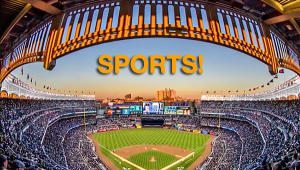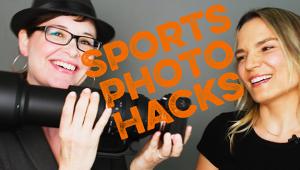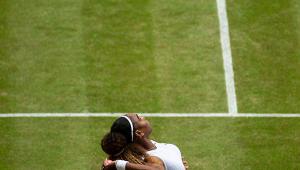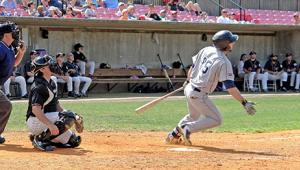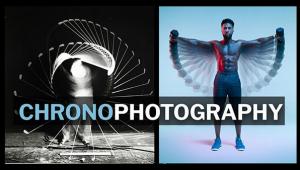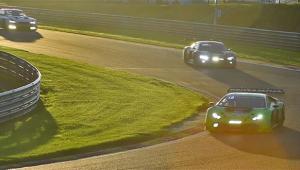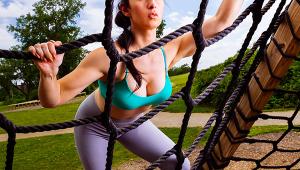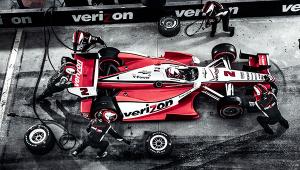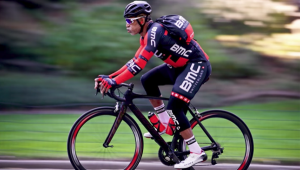Action Photography
|
Tips and ideas to improve your action photos
You need two things to get good action photos: some basic action-shooting skills, and some knowledge of the activity you're photographing. The skills include panning, peak action, follow-focusing, prefocusing and developing a sense of timing. The knowledge helps you anticipate those perfect peak moments that make for great action photos. It does take some practice to perfect the techniques, so once you read about how to do it, go out and practice, and practice some more. Soon you'll become proficient, and you'll have some great action photos to show for it. Timing Study the sport(s) you want to photograph. Look at photos in sports magazines, and watch the sport on TV. Think about the pictures you like, and why you like them. Then go out and practice shooting those types of photos. Of course, you'll come up with other neat photo ideas as you shoot, but this will give you a good starting point. And keep in mind, sports aren't the only source of action photos. Pets and wildlife are good sources, and photojournalists must be ready to capture fast-breaking moments, too. Point of View The first step in getting a great action photo is finding a good place for your camera. Where you put your camera is where you put the viewer of your photos, and if you bring the viewer into the action, your photos will be more successful. A good camera position is one that gives you a clear view of the action, keeps you out of harm's way, provides a pleasant backdrop for the photos, and works with the lighting at the scene. Before the event starts, walk around the location and look for suitable shooting locations, taking into consideration access to subjects, the background, the lighting and your personal safety. At some events, you can get right up front, while at others you can't. Either way, find a site with as clear a view as possible of the subject(s). Rule No. 1 about point of view is: Don't get in the way, where you might interfere with the action, or get hurt. A little common sense helps here. At races, there is generally more action at the corners, where the cars bunch up as they slow down. At a baseball game, you might focus on first base for an inning or so, then try the batter's box for a while, then the pitcher's mound, and so on. Whatever the activity, go for the location with the clearest view of some likely excitement, and focus in on the anticipated scene of the action. It's hard to get access to the best camera spots at professional sports events unless you're a pro with a photo pass, and even then, you'll have to fight for those spots at popular events. But that doesn't mean you can't shoot good sports photos. Try taking pictures at kids' and school events. Often you can find a good place for your camera with no special passes. Once you've put together a portfolio of good sports shots, you can approach bigger-time sports facilities and ask for a pass. While "small-time" sports lack the big names and glamour of pro events, they provide lots of great photo opportunities. Kids might not be as polished in their skills as the pros, but they try hard, and there's plenty of action. You can capture emotional images that show every bit as much drama as any in the pro sports world. And you don't need those exotic supertelephoto lenses at such events—you can get many great shots with focal lengths from 35mm to 135mm, a range found on many point-and-shoot cameras. By shooting "small-time" sports, you can master focusing and tracking a subject with the camera, and develop a good sense of timing. Practice makes perfect (or at least, professionally competent), and you can get it—and some great photos—at kids' sports events. You can find such events at local parks and recreation areas on almost any weekend. The specific sports will vary with the season, but during a single year, you'll encounter football, soccer, baseball, basketball, track and field, tennis, swimming and more. During winter, the local skating rink or ski slope can provide lots of photo opportunities. Buy a pit pass at a local auto race track, and you can probably find a good spot to shoot action (but check with the officials to be sure you stay out of danger). Once you've found a safe spot for your camera with a good view of some action, it's time to check out background and lighting. It's really hard to thoroughly examine everything in your composition in the heat of the action, but you can do it at your leisure beforehand. Decide at which point(s) you want to shoot your subject, then check out the background and lighting. If there are distracting elements in the background, do something about it: Move the camera so those elements are no longer in the picture, or plan on shooting at a wide lens aperture to throw the background elements so far out of focus that they won't distract in the photograph. Next, check out the lighting. Outdoors, the sun is generally the main light source. If it's early or late in the day, you don't want to set up shooting into the sun. While backlighting can be dramatic, it's not ideal for most action shots, and can cause lens flare. A thin overcast produces more even lighting, but reduces the overall light level, requiring slower shutter speeds or faster film. While you generally want to avoid harsh direct sunlight for portraits, it can make for colorful action shots—and is bright enough that you can stop action with the slower, finer-grained films, and benefit from their generally richer colors. Watch a few subjects pass through your selected shooting area, and see how the lighting affects them. |
- Log in or register to post comments






